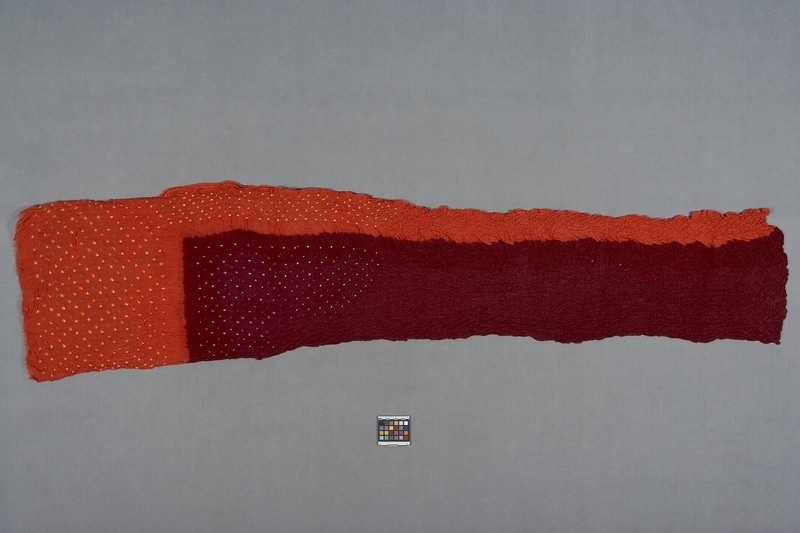Sari Item Number: Ef254 from the MOA: University of British Columbia


Description
Large rectangular piece of thin, muslin-like, tie-dyed cotton. Fabric has been folded in four and entirely covered with closely spaced, knot-like resist ties that penetrate all four layers of folded cotton, giving the material a puckered appearance. The outer border of the fabric has been dyed orange, while the rectangular centre is a deep red. Where resist ties have come undone at one end, a minute dotted motif of white, yellow, and green circles surrounding tiny red or orange centres emerges.
History Of Use
Rajasthan is one of the leading areas in India for plangi technique. At one time exports were considerable. In clothes for sale, resist ties are not normally removed but untied in only one corner to reveal all colours. This enables buyer to distinguish between handmade and factory imitations. This sari, purchased in a cloth bazaar, is the most inexpensive type and is worn throughout Rajasthan, especially in Jodhpur. Bright colours such as these reds and yellows are popular there.
Specific Techniques
Ties demonstrate plangi, a technique in which a design is obtained by bunching and tying portions of fabric so that dye will not be absorbed. After dyeing, these resist portions emerge as negative patterns, either scattered or in groups.
Cultural Context
woman's dress
Item History
- Made in Jodhpur, Rajasthan, India before 1977
- Collected during 1977
- Owned by Stephen Inglis before December 2, 1977
- Received from Museum of Anthropology Donations Fund (Funding source) and Stephen Inglis (Seller) on December 2, 1977
What
- Name
- Sari
- Identification Number
- Ef254
- Type of Item
- sari
- Material
- cotton fibre and dye
- Manufacturing Technique
- tie-dyed
- Overall
- height 198.0 cm, width 47.0 cm
Who
- Culture
- North India
- Previous Owner
- Stephen Inglis
- Received from
- Museum of Anthropology Donations Fund (Funding source) and Stephen Inglis (Seller)
Where
- Holding Institution
- MOA: University of British Columbia
- Made in
- Jodhpur, Rajasthan, India
When
- Creation Date
- before 1977
- Collection Date
- during 1977
- Ownership Date
- before December 2, 1977
- Acquisition Date
- on December 2, 1977
Other
- Item Classes
- textiles
- Condition
- good
- Accession Number
- 0411/0138